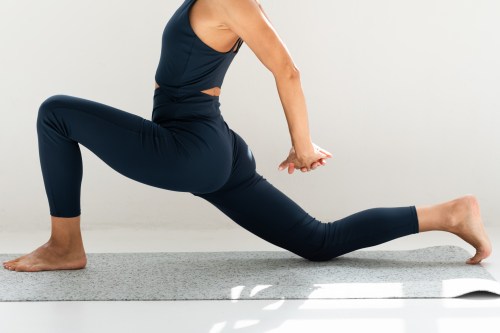Kettlebell swings are one of the best exercises you can do. But sorry, arms—it’s not about you. Even though they’re important in the movement, they should be relaxed—not controlling or lifting the bell as you swing it into the air. Instead, there’s only one part of your body that should be the star of the show in this movement—your hips.
When you do kettlebell swings correctly, you’re guaranteed a killer workout. “The kettlebell swing is an essential foundational movement that translates to just about every single activity a person does, from standing and walking to running and jumping. For the more advanced athlete, the swing develops power and explosiveness essential for speed, jumping, acceleration, and more,” says Matt Veigl, head trainer at EverybodyFights in Lexington, Kentucky. “Whether you’re a beginner, intermediate, or advanced athlete, it’s a tremendous tool to use to enhance performance and overall ability.”
Unfortunately, your arms aren’t going to help you see any of these perks. It’s an explosive movement, and if you’re not giving all the power to your lower body and mastering the hip hinge correctly, you could be doing more harm than good. Including hurting your lower back—a common injury that can occur from one too many incorrect swings.
“The kettlebell swing motion is a powerful hip extension that uses your main ‘power’ muscles—the hips, hamstrings, and glutes,” Veigl says. “Focusing on driving the movement from your hips will help maximize hamstring and glute utilization while minimizing reliance on the quads for knee extension. It’s an explosive version of a hip hinge; your butt and hips travel backward but don’t move up or down.”
Here’s how to make sure you’re putting your hips into it—not your arms.
4 rules of proper kettlebell swings, according to trainer Matt Veigl
1. Keep the kettlebell close to your body during the backward portion of the movement.
This keeps the exercise safe and maximizes power. The further away from your body the kettlebell travels during this phase, the longer the lever (you arm) will be, which bleeds power and increases the risk of you using your back instead of your extensor muscles. I like to use the cue “keep the kettlebell tight to your business.”
2. The movement of the kettlebell swing is back to front, not up and down.
At the back of the movement, there should be tension in your hamstrings. Keep your core engaged and braced, chin tucked, and spine straight. Driving from the hamstrings and glutes, the next part of the movement is a powerful thrust forward into full hip extension.
3. Don’t forget to use your core.
While the hamstrings, glutes, and hips are the engine of the kettlebell swing, the brakes are just as important. Your core is what stops the movement at the top and prevents hyperextension of the lumbar spine. While there is tension in the posterior shoulder, your arms and the kettlebell are really just along for the ride.
4. Always make sure to finish strong.
When the bell reaches its apex—the moment of weightlessness at the top of the swing—pull it back between your legs, as close to your body as possible, and send your hips back.
Even though a kettlebell swing isn’t about your arms, these 6 sculpting movements you can do with a kettlebell are. If you really want to up your game, try Turkish get-ups—the all-in-one workout you can do with just a kettlebell.
Sign Up for Our Daily Newsletter
Get all the latest in wellness, trends, food, fitness, beauty, and more delivered right to your inbox.
Got it, you've been added to our email list.











